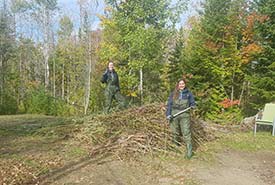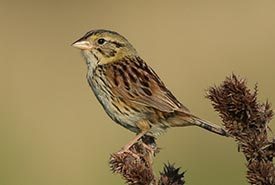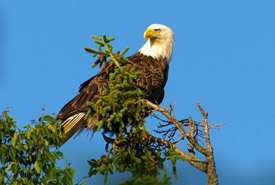A call to action: The United Nations Decade on Ecosystem Restoration

A restored wetland in Norfolk, ON (Photo by NCC)
Earlier this June, on World Environment Day, the United Nations kicked off the Decade on Ecosystem Restoration, lasting from 2021 to 2030. The goal of this global movement is to “prevent, halt and reverse the degradation of ecosystems on...
UN Decade on Ecosystem Restoration: 5 ways NCC volunteers are contributing

Restored wetland, Pelee Island, ON (Photo by NCC)
2021-2030 marks the UN Decade on Ecosystem Restoration, indicating the urgent need for humans to prevent and protect our Earth’s ecosystems from further degradation. As a new summer intern with the Nature Conservancy of Canada (NCC),...
Calling in the corps — the Canadian Conservation Corps

CCC participants cutting invasive phragmites stems (Photo by NCC)
They say that many hands make light work. Well, I don’t know if the hard-working young people who hauled brush, cut phragmites stems or collected buckets of acorns would tell you that the work was “light” but I can certainly say...
Thank you, volunteers!

Volunteers transplant short-ligule ammophilia plants on the sandbar of the Barachois of Malbaie in Gaspésie (Photo by NCC)
Since 1962, the Nature Conservancy of Canada (NCC) has conserved habitat across Canada equivalent to an area totalling almost four times the size of Vancouver Island. It’s no surprise that a lot of work goes on behind the scenes once an...
A field season in the Rice Lake Plains that was far from plain

Rice Lake Plains, ON (Photo by NCC)
This past field season spent as a conservation technician with the Nature Conservancy of Canada (NCC) was one to remember. As a soon-to-be graduate of the master's of environmental science program at the University of Toronto, specializing in...
A throwback to working in Backus Woods

Forest canopy in Backus Woods, ON (Photo by Neil Ever Osborne)
I had the pleasure of working for the Nature Conservancy of Canada (NCC) for the summer of 2019 as a conservation technician out of the Norfolk County, Ontario, office. When I first came to Norfolk, I was expecting to see mostly farmland and...
Grandparents in the natural world

Old-growth forest (Photo by NCC)
I often find similarity in the structure of human society and in nature's ecosystems. Reflecting on how our community is comprised of people from all walks and stages of life, I can’t help but think the same about forests. As Grandparents...
Rooting myself in restoration

All smiles after a full day in the field at the Napanee Plain Alvar Nature Reserve, cutting back sumac and prickly ash to improve the habitat quality for eastern loggerhead shrike. (Photo by Samantha Ceci)
My career in the field of ecosystem restoration has begun to sprout, thanks to the Nature Conservancy of Canada (NCC). It all began with an email last year, where I inquired about volunteering for NCC. I was interested in shifting gears in my...
Restore it and they will come

Henslow's sparrow (Photo by Adam Timpf)
One spring day last year, I was doing what I always do: walking the family dog and noting on my ebird app what birds were around. This daily ritual exercises the dog and allows me to collect data on what birds and wildlife are inhabiting our farm...
World Wildlife Day: The impossible eagle

Bald eagle (Photo by Keith Mombour)
I have many memories of wildlife firsts. There’s a vivid memory of seeing my first white-tailed deer peering through the woods as I peered back through the school bus window. And I can still see the eyes of my first up-close encounter with a...

